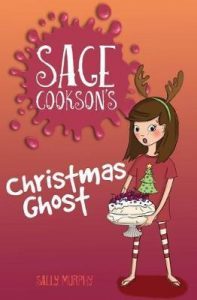Sally Murphy's Blog, page 30
December 4, 2017
Teacher Tuesday: Write a Christmas Tree Poem
It;s Teacher Tuesday, but with the end of the school year rapidly approaching, I thought I might offer something different this week. Instead of offering teaching activities for one of my books,I am offering a quick poetry writing idea.
Write a Christmas Tree Poem
Challenge your students to write a poem in the shape of a Christmas tree, like this one here:
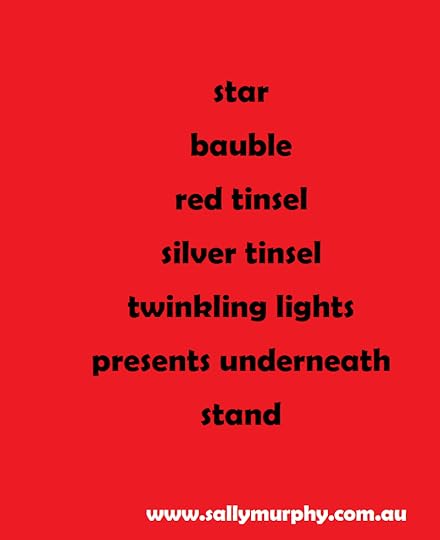 .
.
For older students they can use my attempt as a mentor text. For younger students you might provide a printed worksheet with a tree outline and lines drawn. Older children can be challenged to write other Christmas shape poems – for example, in the shape of baubles, stockings or presents.
If you’d like a quick craft activity for your classroom, over on the Sage Cookson website, you’ll find a printable template for an antler headband.
This is the last Teacher Tuesday post for this year, but it will return in January in time for the new school year. In the meantime, if you missed earlier posts, you can still find suggestions for each of the following books by clicking on the titles:
and Sage Cookson.
Thanks for visiting, and if there is a topic you’d like covered in Teacher Tuesday during 2018, let me know.
November 30, 2017
Poetry Friday: Christmas is Coming
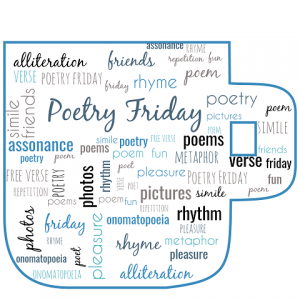 It’s Poetry Friday and it’s also December 1, which is both the first day of Advent, and the first day of summer here in Australia.
It’s Poetry Friday and it’s also December 1, which is both the first day of Advent, and the first day of summer here in Australia.
So, although I keep thinking it’s ages till Christmas, I guess it is now officially close. It’s also a sign that the school year (which runs from February to December) is coming to a close, and in classrooms across the country, kids and teachers alike are looking forward to school finishing. With all that in mind, here’s a little poem about December – and Christmas – in Australia.
Christmas is Coming
Christmas is coming.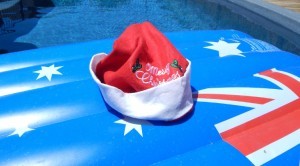
We’ve stopped learning stuff at school
except how to sing Jingle Bells
whilst standing straight and tall
so the folks can get good piccies
at speech night;
and how to get glitter to stick
to a polystyrene ball
to hang on the Chrissie tree;
and how to make a gazillion cards
one for Mum
one for Dad
and two for the grandmas;
and how to carry home
all those scrapbooks
and artworks
and dead textas
and how to concentrate
on all this
even though it’s 40 degrees
and our classroom isn’t airconditioned
and all we really think about
as that Christmas is coming.
(Poem copyright Sally Murphy)
Today’s Poetry Friday roundup is at A Reading Year. Head over there for lots more poetry goodness.
November 29, 2017
What I Read in November – and Confessions About My To-Be-Read Pile(s)
December tomorrow? How did that happen? When I started recording my monthly readings back in January, it seemed like a year of reading was spread out ahead of me in an endless array of possibilities. Now, there is only one month until it is no longer 2017. How did that happen? That means it’s almost time to tally up how I went for the year. As I look at my bulging to-read pile, I wonder if I can go without sleep for the rest of the year,just to whittle that down to something manageable. But who am I kidding? First, I like sleep almost as much as I like reading. And second, my to-read pile is never-ending. And, in fact, it isn’t a pile at all.
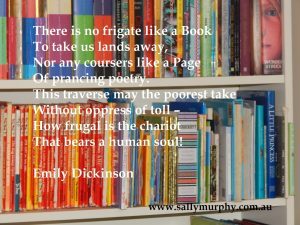 There’s the review pile, which is two shelves in my office,currently home to perhaps books (and, I suspect, likely to grow int he next few days as is wont to happen at the start of a new month). There’s my Borrowbox App on my phone, which has just three unread audio books on it, only because I have a limit of five and I returned two this morning. (if you don’t know about Borrowbox, ask your local librarian. Or ask me.) there’s the pile next to my lounge chair which has perhaps ten books I’ve bought and promised myself don’t need shelving until i have read them. And, in the back bedroom (which I once envisioned becoming my office – ohh how naive is a mother of young adults and a revolving front door), there is a special bookshelf of unread books which I simply must read, and which used to be a pile until it threatened to reach the ceiling and so was designated a bookcase. And that is just my to-be-read pile of books I’ve actually acquired, because I also have lists (several) of books which I MUST borrow/buy and read as soon as possible.
There’s the review pile, which is two shelves in my office,currently home to perhaps books (and, I suspect, likely to grow int he next few days as is wont to happen at the start of a new month). There’s my Borrowbox App on my phone, which has just three unread audio books on it, only because I have a limit of five and I returned two this morning. (if you don’t know about Borrowbox, ask your local librarian. Or ask me.) there’s the pile next to my lounge chair which has perhaps ten books I’ve bought and promised myself don’t need shelving until i have read them. And, in the back bedroom (which I once envisioned becoming my office – ohh how naive is a mother of young adults and a revolving front door), there is a special bookshelf of unread books which I simply must read, and which used to be a pile until it threatened to reach the ceiling and so was designated a bookcase. And that is just my to-be-read pile of books I’ve actually acquired, because I also have lists (several) of books which I MUST borrow/buy and read as soon as possible.
I guess what all this means is that my to-be-read pile is NEVER going to be something manageable. But, you know what? I don’t really mind. because that means that I live in a world filled with wonderful books. And that’s a wonderful thing. But, one of my goals for December IS to tackle the review pile, because there are some titles int here that I cannot wait to read – and share with the world. So, hopefully, my December list, which you’ll have to wait a month for, will be longer than this one. In the meantime, here’s what I read in November.
If you want me, I’ll be curled up with a book, in between all the December madness.
Picture Books
 I Just ate My Friend, by Heidi McKinnon
I Just ate My Friend, by Heidi McKinnon
Koala, by Claire Saxby and Julie Vivas
Do not Open This Book Again, by Andy Lee & Heath McKenzie
Rodney Loses It, by Michael Gerard Bauer & Chrissie Krebs
Scarface Claw Hold Tight, by Lynley Dodd
A is for Australian Animals, by Frane Lessac
The Sloth Who Came to Stay, by Margaret Wild & Vivienne To
Children’s Books
The Pink Snowman, by Alan Horsfield
How to be Good(ish), by Karen McCombie
Ivan the Terrible, by Anne Fine
Young Adult Books
Gap Year in Ghost Town, by Michael Pryor
Books for Adults
Abundance Now, by Lisa Nichols
The Innovation Secrets of Steve Jobs, by Carmine Gallo
Hello, Goodbye, by Emily Brewin
The Next Big Thing, by Anita Brookner
The Gifts of Imperfection, by Brene Brown
Succeed With Me, by Selwa Anthony
November 27, 2017
Teacher Tuesday: Using Sage Cookson in a Year Three Classroom
Welcome to the ninth edition of Teacher Tuesday, where I match one of my books to a year level, and offer some activities for sharing the book in the classroom. In previous weeks I shared activities for Pearl Verses the World, Looking Up, Toppling, Roses are Blue, Do Not Forget Australia, Meet Mary MacKillop, Snowy’s Christmas and The Floatingest Frog.
This week, I am focusing on the Sage Cookson series. There are now six books in the series, including  the newly released Sage Cookson’s Christmas Ghost. At this stage in the school year, sharing some short, unchallenging chapter books is a great way to keep kids reading – and writing. And, with recipes included and the potential for simple Christmas crafts, you can craft lots of varied lessons.
the newly released Sage Cookson’s Christmas Ghost. At this stage in the school year, sharing some short, unchallenging chapter books is a great way to keep kids reading – and writing. And, with recipes included and the potential for simple Christmas crafts, you can craft lots of varied lessons.
Using Sage Cookson in a Year Three Classroom
Sage Cookson Series (Sweet Escape, Ring of Truth, Fishy Surprise, Singapore Sensation, Literary Launch and Christmas Ghost, by Sally Murphy
Published by New Frontier Publishing
Format: Paperback chapter books, RRP $9.99
Blurb: Sage Cookson is a ten year old with a pretty different lifestyle. Her parents are television chefs with, unsurprisingly, a passion for food. They spend a lot of their time travelling Australia and the world sampling the food, learning new cooking techniques and then sharing their new knowledge with their massive television audience. For Sage, this means she gets to embark on adventurous travels with her parents.
Sally’s Recommended Grade Levels: Year 1 – year 5 but these suggestions focus on Year 3.
Themes/Topics:
Cooking/Food
Travel
Adventure
Friendship
Resilience
Mystery
Dedicated website with activities, recipes and sample chapters HERE.
Curriculum Links:
The following ideas link the enjoyment and exploration of Sage’s adventures with learning requirements of the Geography strand of the HASS Curriculum.
Year 3 English and HASS
1.Discuss how language is used to describe the settings in texts, and explore how the settings shape the events and influence the mood of the narrative (ACELT1599).
This activity uses the first book of the series Sage Cookson’s Sweet Escape. This book can be shared as a read-aloud over a few sessions.
During or after reading, focus on the description of setting on page 8, page 26 and page 27-28. As a
 class or in groups, identify words used to describe the setting. Discuss what mood these words evoke. How do these words echo what is happening in the story, and Sage’s feelings?
class or in groups, identify words used to describe the setting. Discuss what mood these words evoke. How do these words echo what is happening in the story, and Sage’s feelings?Activity: Have students write two descriptions of a familiar setting (eg the classroom/their bedroom/ a shopping centre), evoking two different moods in the same setting.
Create Word Bank Posters for classroom display boards. As students read other books in the series, have them add words describing settings to the word banks. Word banks can be themed by mood – eg happy, exciting, fun, scary or by location – inside, built environments, beach, nature etc.
2.The location of Australia’s neighbouring countries and the diverse characteristics of their places (ACHASSK067)
The similarities and differences between places in terms of their type of settlement, demographic characteristics and the lives of the people who live there, and people’s perceptions of these places(ACHASSK069)
Plan, draft and publish imaginative, informative and persuasive texts demonstrating increasing control over textstructures and language featuresand selecting print ,and multimodal elements appropriate to the audience and purpose (ACELY1682)
Use the remainder of the Sage series to discuss travel to other states and countries. Read back of book blurbs and try to identify where each book is set. Use a map to identify which parts of Australia/the world the books are set in. Discuss the use of a food item or group in each book. Have students predict which food might be featured in each book, and discuss which foods are closely tied to the places Sage visits (eg fish at a coastal setting) and which could be connected to other places (eg chocolate in SW Western Australia) .
Ask students to contribute places they have visited, or lived, or that family members are from. Locate on the world map, and brainstorm what class members know about the place.
Students to choose one town/city they have not visited and research: location, climate, languages spoken, population, geographical features, cusine etc. This could be a short task, with oral reports, or be used as a report-writing or multimedia task, depending on your time availability and other objectives.
Creative writing task. Students to plan and write a new story featuring Sage Cookson travelling to the place they have researched. Guiding questions for planning: how would Sage and her parents travel there? What kinds of food might they be researching? What could go wrong in that location?
Other suggestions for using Sage Cookson books in your classroom include:
Each book includes a back of book recipe. Using these as examples, discuss the elements of a recipe. As a class, compose a recipe for a good narrative. What ingredients should a narrative have? What steps should you follow?
Art and craft: Make a chef hat. Instructions are on the Sage Cookson website here.
Email the author (that’s me!) Your students can write to me through this website, and share their responses or ask questions.
Related Books
Do Not Forget Australia, by Sally Murphy (contrast in travel in 1918 and now)
Dork Diaries, by Rachel Renee Russell
WeirDo, by Anh Do
Geronimo Stilton Series
Mostly, I’d love to remind you that while I love to see my books used in classrooms, I also love to see kids just enjoying them. Reading a book should be pleasurable – whether it’s being used in the classroom or not. So allow your students to enjoy reading the Sage Cookson series.
If you find this useful, or have any suggestions or comments, do leave a comment. And, if there is a particular book or year level or topic that you would like covered in a future edition of Teacher Tuesday, let me know.
November 24, 2017
Backyard Book Fair
Christmas is coming and, to celebrate, I am joining lots of my fellow West Australian children’s book people at the State Library next Saturday for the Backyard Book Fair:
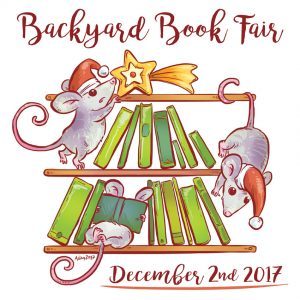
There will be activities, readings, crafts and book sales and signings. Most of all, there will be fun! Here’s a glimpse of the program:
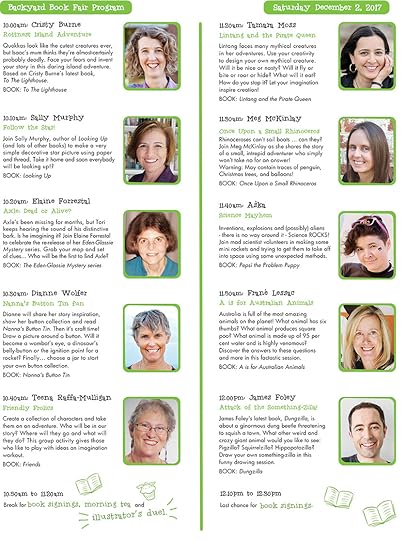
This is a free event, but it is ticketed so, to save a seat for yourself and your family, book here asap.
And, if you are there, come and say hello!
November 23, 2017
Poetry Friday: Poetry Poor No More
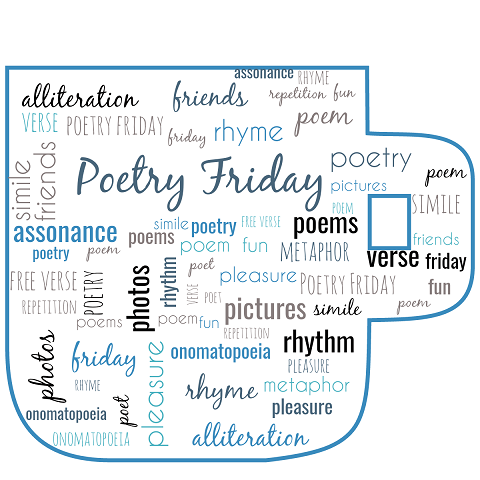
Who would have thought that sharing one of my older poems would turn into a series of posts? Two weeks ago I shared The Newspaper, and talked a little about how older poems might still resonate even though aspects of them might age. The comments on this post, and a delightful poem about Poetry Hoarding became the subject of last week’s post. Again, lots of discussion ensued, and a comment by Linda Mitchell wouldn’t leave me alone. Linda said, in her comment, that she grew up ‘poetry poor’.
Ooooh. That phrase! It would not leave me alone. Such a poetic turn of phrase to describe a sad lack of poetry experiences in her early years. Luckily, she is now surrounded by poetry. So, Linda, here’s a poem for you, inspired by that phrase.
For Linda
She was poetry poor 
No rhyme nor reason
Nor a single metaphor
Now she’s poetry rich
With pace and rhyme and rhythm
In perfect, harmonic pitch
Now she’s poetry wealthy
Her simile’s superb
Her cadence always healthy
Now she’s poetry wise
With onomatopoeia
And alliteration in her eyes.
(Poem copyright Sally Murphy, 2017)
As always, I’d love to hear your thoughts on poetry in general, and on what we can do as educators, poets, parents, to ensure children don’t grow up poetry poor.
This week’s Poetry Friday roundup is hosted by Carol at Carol’s Corner. Pop over there for a wealth of poetry links.
November 20, 2017
Teacher Tuesday: Using Meet Mary MacKillop in a Year 4 Classroom
Welcome to the eighth edition of Teacher Tuesday, where I match one of my books to a year level, and offer some activities for sharing the book in the classroom. In previous weeks I shared activities for Pearl Verses the World, Looking Up, Toppling, Roses are Blue, Do Not Forget Australia, Snowy’s Christmas and The Floatingest Frog.
This week, I am focusing on my picture book, Meet Mary MacKillop which can be used to meet objectives in both both the History and English curriculum areas.
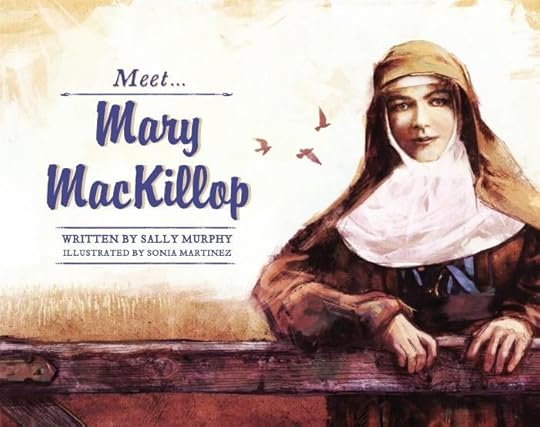 Using Meet Mary MacKillop in a Year Four Classroom
Using Meet Mary MacKillop in a Year Four ClassroomMeet Mary MacKillop, by Sally Murphy, illustrations by Sonia Martinez
Published by Random House, 2013
ISBN: 9781742757216
Format 32page Hardcover, RRP $19.99
Blurb: Mary MacKillop, Australia’s first saint, was born in the 1800s and devoted her life to teaching children. Mary believed everyone should have the chance to learn, no matter how rich or poor they are. In 1866 she set up her first school and founded an order of nuns called the Sisters of St Joseph of the Sacred Heart. This book tells the story of that first school.
Sally’s Recommended Grade Levels: Year 1 – Lower Secondary, but these suggestions focus on Year 4.
Themes/Topics:
Famous Australians
Education/Schools
History
Women
Religious Education
Self-belief
Publisher teaching notes available HERE
This unit of work uses Meet Mary as the basis for examining both the life of Mary MacKillop, and examining the roles and significance of other famous Australians.
Curriculum Links:
Year 4 History and English
Pose questions to investigate people, events, places and issues (ACHASSI073)
Sequence information about people’s lives and events (ACHASSI076)
Present ideas, findings and conclusions in texts and modes that incorporate digital and non-digital representations and discipline-specific terms (ACHASSI082)
Plan, rehearse and deliver presentations incorporating learned content and taking into account the particular purposes and audiences (ACELY1689)
Before reading: discuss the word ‘famous’. Ask students what it might mean to be famous. Brainstorm a list of famous Australians.
Show students the book cover. Ask students who Mary MacKillop was and/or what the cover suggests about her.
Read the Story (apart from timeline).
After Reading: group work. Groups to complete table identifying words and images which show this book is set in the 1800s. Subheadings: Words/Language Used; Transport; Dress; School Equipment; Other. One column to identify what is portrayed in the book, and a second column to identify how these things might be today.
Discuss what a timeline is. Students to compose simple timelines of their lives so far. Share
Examine back of book timeline. In groups, students to identify which events are included in the story. Discuss: Why did Sally Murphy choose only part of Mary MacKillop’s life for the story? Can you understand Mary’s life without the addition of the timeline?
Students to choose another famous Australian – either from earlier list or from a list fo teacher suggestions, of a particular time period. Using library/class resource collections and/or internet research, students to research their chosen person and compile their own timeline. Additionally, have them answer the following: Why is this person famous? Where were they born? Which part of Australia did they live in? What was their main achievement? How are they commemorated today (eg are they on a banknote, have buildings or roads named after them, memorialised in stories/songs etc). Why did you choose this person?
Students to compile a visual presentation about their chosen Australian: either digitally or as a poster presentation.
Createliterary texts by developing storylines, characters and settings (ACELT1794)
Plan, draft and publish imaginative, informative and persuasive texts containing key information and supporting details for a widening range of audiences, demonstrating increasing control over text structures and language features (ACELY1694)
Re-read and edit for meaning by adding, deleting or moving words or word groups to improve content and structure (ACELY1695)
Use a range of software including wordprocessing programs to construct, edit and publish written text, and select, edit and place visual, print and audio elements (ACELY1697)
Read other books in the ‘Meet’ series. If enough available, this could be done in groups, with each group examining a different book in the series. Identify key events in each person’s story, and also explore similarities and differences between the different books (each book has a timeline, for example, but the writing and illustrations styles vary. Some of the books cover a single episode in the person’s life, while others cover more of the person’s lives). Encourage students to elaborate which hones they like, and why.
Identify common features in adapting biographies to fiction (the term here is historical fiction): creating characters, use of dialogue, key details, use of details to set scene (time and place).
Students to use information from their timelines/presentations to craft a narrative telling their chosen person’s story – either one episode, or an overview of their life. This could be extended to create a picture book version.
Other suggestions for using Meet Mary MacKillop in your classroom include:
Mary wrote many letters to her mother and to other people throughout her life. Examine the
 elements of a letter, and draft and write a letter. the theme of letters is also part of my book Looking Up.
elements of a letter, and draft and write a letter. the theme of letters is also part of my book Looking Up.The work of Mary MacKillop continues through the sisters of St Joseph. There are various museums and centres across Australia and new Zealand which are open for school groups for different excursions.
Art: read the interview with the illustrator, Sonia Martinez in the official teaching notes. Create collage art using historical pictures, combined with the students own drawings.
Email the author(that’s me!) Your students can write to me through this website, and share their responses or ask questions.
Related Books
Meet the ANZACs, by Claire Saxby
Meet Weary Dunlop, by Claire Saxby
Meet Douglas Mawson, by Mike Dumbleton
Meet Nellie Melba, by Janeen Brian
Meet Banjo Patterson, by Kristin Weidenbach
Looking Up, by Sally Murphy
Mostly, I’d love to remind you that while I love to see my books used in classrooms, I also love to see kids just enjoying them. Reading a book should be pleasurable – whether it’s being used in the classroom or not. So allow your students to enjoy reading Meet Mary MacKillop.
If you find this useful, or have any suggestions or comments, do leave a comment. And, if there is a particular book or year level or topic that you would like covered in a future edition of Teacher Tuesday, let me know.
November 16, 2017
Poetry Friday: The Poem Hoarder

Last Friday, I posted my poem The Newspaper, and talked about whether a poem can become dated or vene outdated. And I asked readers which ‘old’ poems they still connect with. I had such pleasure from the responses that I thought I’d share some of them this week.
Starting with Tabatha Yeatts who pointed out that people like to read about other times in the same way they like to read about other places. She shared the wonderful LP Hartley quote (from The Go-Between):
“The past is a foreign country; they do things differently there.
This quote itself could spark a whole new topic: that of wonderful opening lines. But I’ll try to stay on-topic here.
Michelle and Jama both agree that some poems, and poetic forms, do become dated but, Jama adds, “the truth in words of human experience, crafted with care and attention, are forever”.
Other commenters shared their favourite ‘old’ poems, from Little Orphant Annie (a favourite of Linda), to Chaucer (Kay‘s go-to). Brenda holds the “red wheel/ barrow” of William Carlos Williams close to her heart, and Michelle has always loved The Owl and the Pussycat. Donna, like me, was (and still is) a big fan of R.L. Stevenson, like me.
All of these posts and the surrounding discussion delighted me. But imagine my absolute joy when I learned that the post has inspired a brand new poem on the topic. here’s what Penny had to say:
.., I don’t want to let go of poems or much from the past in terms of literature. It may be outdated but it’s a part of me. And your post inspired a poem (below)! Thanks!
Hoarder
I want to be a poem hoarder—
stacking them here and there
and there and here
in my mind.
For I never know when
a line
or a verse
or an entire poem
might bring joy or comfort
or remind me of a time
that I hold dear.
(Poem copyright Penny Parker Klostermann, 2017)
Thanks Penny both for responding in poetry and for allowing me to use your poem in a new poem.
And thanks to everyone who shared in the discussion.
This week’s poetry Friday roundup is on the Rain City Librarian blog, where Jane is hosting for the first time. Pop over there to check out more poetry goodness around the internet this beautiful Friday. Who knows, you might find a new poem to hoard.
November 14, 2017
Want to be a Writer? BE a Writer
While I was in Sharjah, I spoke about a lot of different aspects of reading and writing. I had three different workshops, each of which I ran four times with audiences of different sizes and ages. But in every session I tried to leave participants with the same two messages: read every day and write every day. These messages are as important for adults as they are for children, whatever you want to do in life.
But, of course, the message is even more important if you want to be a writer. You can only be a writer if you write. And, although the lesson is one I have to remind myself of often, the value of writing every day is immense.
But how do you get motivated and stay motivated to write every day? In this video, James Clear, an expert on habit formation, is really well worth watching.
Good huh? If you don’t have time to watch it now, I suggest you go back and watch it another time. There’s a lot of really good takeaways.
To sum it up, though, right near the end is a message which is one I have used before and will use again: if you want to be a writer BE a writer. Don’t just say you want to be a writer, believe that you are. And the best way you can believe that about yourself, is to write. Every day.
I already try to do this, but I’m going to ramp this up using what Clear calls ‘The Seinfeld Method’. And if you want to know more about that, watch the video.
Have a great day.
November 13, 2017
Teacher Tuesday: Using Roses are Blue in a Year Four Classroom
Welcome to the seventh edition of Teacher Tuesday, where I match one of my books to a year level, and offer some activities for sharing the book in the classroom. In previous weeks I shared activities for Pearl Verses the World, Looking Up, Toppling, Do Not Forget Australia, Snowy’s Christmas and The Floatingest Frog.
This week, continuing my focus on verse novels, I am focusing on my third verse novel, Roses are Blue.
Using Roses are Blue in a Year Four Classroom
Roses are Blue , by Sally Murphy, illustrations by Gabriel Evans
, by Sally Murphy, illustrations by Gabriel Evans
Published by Walker Books, 2014
ISBN: 9781922244376 (Paperback)
Format 112 page Paperback, RRP $16.99
Blurb: “I have not got used to my new mum, even though I love her (I absolutely love her), but I miss my happy, painting, dancing, gardening, smiling mum.” Amber Rose and her family are dealing with tragedy and change. Her mum is different, her home is different and she has even had to start at a new school. Amidst all that change, Amber finds it is still possible to find hope.
Sally’s Recommended Grade Levels: Year 2 – Adult, but these suggestions focus on Year 4.
Themes/Topics:
Friendship
Belonging
Disabilty
Family
Coping with Change
Mothers Day
Empathy and Compassion
Art
School
Publisher teaching notes available HERE
Curriculum Links:
Year 4 English
Discuss literary experiences with others, sharing responses and expressing a point of view (ACELT1603).
Before reading: set up individual journals OR a special section is students’ writing journals. Ask students to write about their favourite book, or at least a book they have read recently. Why did they like it? Class discussion: what makes a good book. Create a chart with children’s responses and display in room, to be added to during this unit of work, and revisited.
During reading: after reading each section, have students write about their responses to the story so far. Although you could provide questions for guidance, if possible allow students to write about any aspect of the story that appeals to them. After each writing session, allow time for group/class discussion, encouraging links to students’ own experiences.
After reading: revisit the chart. In groups, students to discuss whether they thought Roses are Blue met their criteria for a good book. Why/Why not? Groups to report back, and discuss as class. (There should be no ‘right’ answers, but the focus should be on providing reasons for their stance, whether positive or negative)
After this discussion, again give time for students to write about their response to the book in their journals.
Discuss how authors and illustrators make stories exciting, moving and absorbing and hold readers’ interest by using various techniques, for example character development and plot tension (ACELT 1605).
Use metalanguage to describe the effects of ideas, text structures and language features of literary texts (ACELT 1604).
During reading introduce students to the terms ‘free verse’ and ‘verse novel’. After reading use groups to establish similarities and differences between verse novels and prose novels. Discuss findings.
During and/or after reading, analyse key scenes, for example:
Stop after reading pages 7-9 (opening pages) and have students predict what might make Amber’s mum so different. Then read p. 10. Discuss students’ reactions to the revelation, and have them write about their responses in their journal (see above). After reading, discuss why the novel might have started this way – with Mum’s condition not revealed until the fourth page, and the reasons for it revealed gradually. Did this create interest? Did it highlight different aspects of Amber’s emotions?
Reread pp 36-39. Give each group a copy of the pages and ask them to look for repetition. Which words are repeated? Which phrases? What is the effect?
Read p. 47 and compare what we learn here about Mum with what we learnt on pp 36-39. Discuss: does this contradict what Amber has told us? Why do you think Amber calls this a ‘confession’? Journal writing/discussion: Are mums (or dads) supposed to be perfect?
Analyse the characters of Leroy Jamieson and Lola Jones. Groups to draw up a table listing what they learn from each one about the book. Report back and build a class list. Discuss: How are the two similar? How are they different? Do you think Sally Murphy deliberately gave them similar names? Why?
Create literary texts that explore students’ own experiences and imagining (ACELT1607).
Plan, draft and publish imaginative, informative and persuasive texts containing key information and supporting details for a widening range of audiences, demonstrating increasing control over text structures and language features(ACELY1694).
Re-read and edit for meaning by adding, deleting or moving words or word groups to improve content and structure (ACELY1695).
Use a range of software including wordprocessing programs to construct, edit and publish written text, and select, edit and place visual, print and audio elements (ACELY1697).
Use the poem on page 10 as a mentor text for students to create their own poem about their own mum or another family member. It could even be themselves or a pet. As well as ‘different’, you could suggest other adjectives such as ‘special’, ‘wonderful’ , ‘silly’.
Rewrite one of the scenes in the book from the point of view of one of the other characters: Mum, Leroy, Saffron, Dad, Aunty Fi, Lola etc. Encourage children to have a go at doing this as a free verse poem – again they could use the scene as a mentor text.
If Mum could talk, what would she say? This might be a wonderful opportunity to work on speech and thought bubbles, with students drawing Mum and showing some of her thoughts.
Any or all three of these creative exercises can be revised, edited and published for class display, or as class book, or in writing portfolios.
Other suggestions for using Roses are Blue in your classroom include:
Create invitations to a Mother’s Day tea, as Amber’s class do. Or to any other class event, real or imagined.
The blue rose has been the aim of many plant breeders. Have students research whether blue roses exist, and report on this. And/or build a list of other blue flowers.
Craft: create paper roses, using this tutorial, or any other.
Email the author(that’s me!) Your students can write to me through this website, and share their responses or ask questions.
Related Books (these are all verse novels)
PearlVerses the World, by Sally Murphy, illustrated by Heather Potter
Toppling, by Sally Murphy, illustrated by Rhian Nest James
Motormouth, by Sherryl Clark
Farm Kid, by Sherryl cCark
Bully on the Bus, by Kathryn Apel
Mostly, I’d love to remind you that while I love to see my books used in classrooms, I also love to see kids just enjoying them. Reading a book should be pleasurable – whether it’s being used in the classroom or not. So allow your students to enjoy reading Roses are Blue.
If you find this useful, or have any suggestions or comments, do leave a comment. And, if there is a particular book or year level or topic that you would like covered in a future edition of Teacher Tuesday, let me know.

